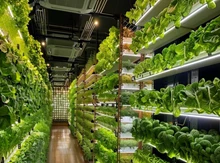
Organic cotton accounts for only 1-2 percent of India's 125 million hectares dedicated to the natural fibre. However, islands of long-term experiments show promise for the organic variety. Grameena Vikas Kendram, a non-governmental organization that works with tribal farmers in north-coastal Andhra Pradesh, has gathered approximately 3,000 tribal farmers to purchase 400 tonnes of organic cotton during the 2022-23 kharif season.
"We've delivered it to international brands in the United States, Germany, and the United Kingdom. Farmers have received at least $500-600 extra every quintal (market price is $7,200-7,500) of fibre produced," says Aneel Kumar Ambavaram, main functionary of the Visakhapatnam-based NGO. Raddis (Radical disruption) began with 42 farmers in three communities and has since expanded to 140 villages.
"At least half of them sold the finished product to other buyers. They do not simply grow. They grow a wide range of crops," Ambavaram explained. The NGO has branded its product as Raddis Cotton, which is being sold internationally. Encouraged by the positive results, the NGO intends to expand the programme to more villages. "We intend to investigate export opportunities in Australia, France, and Denmark," he said.
KV Ramana Reddy is a lone wolf in Telangana. While other farmers in the region grow transgenic cotton, he has grown organic cotton for over 20 years, defying the lure of Bt cotton. "By using natural farming methods, I save $80 for every $100 that other farmers spend."
Furthermore, I earn $1,000-1,500 extra per quintal of organic cotton sold," says Reddy, who farms cotton on 25 acres in Karvanga village, Nagarkurnool district.
Reddy uses natural farming techniques to cultivate various different crops, including chilies, paddy, and pulses, after being inspired by Subhash Palekar's Zero Budget Farming. He just completed a 10-tonne transaction with a Hyderabad-based specialty fabric firm for his organic cotton. "This year, I produced 20 tonnes of cotton." "I sold the other half on the open market," he explained.
According to GV Ramanjaneyulu, Chief Executive Officer of the Centre for Sustainable Agriculture, organic cotton farming, which showed promise a few years ago, did not take off properly for a variety of reasons. Aside from farmers' declining enthusiasm, the issue of contamination (natural crops contaminated by transgenic crops) is a severe challenge.
During 2017-21, the Central Institute for Cotton Research (CICR) and the All India Coordinated Research Project (AICRP) released 64 non-GM (non-Bt) cotton types and hybrids that organic cotton growers can use. Farmers are also given breeder seeds and a set of organic cotton farming practises. Despite setbacks, India accounts for half of the world's organic cotton production of 2.5 million tonnes. Madhya Pradesh leads the States with 38% of the 8.11 lakh tonnes of organic cotton produced in the country in 2020-21. Orissa comes in second with 20%.










